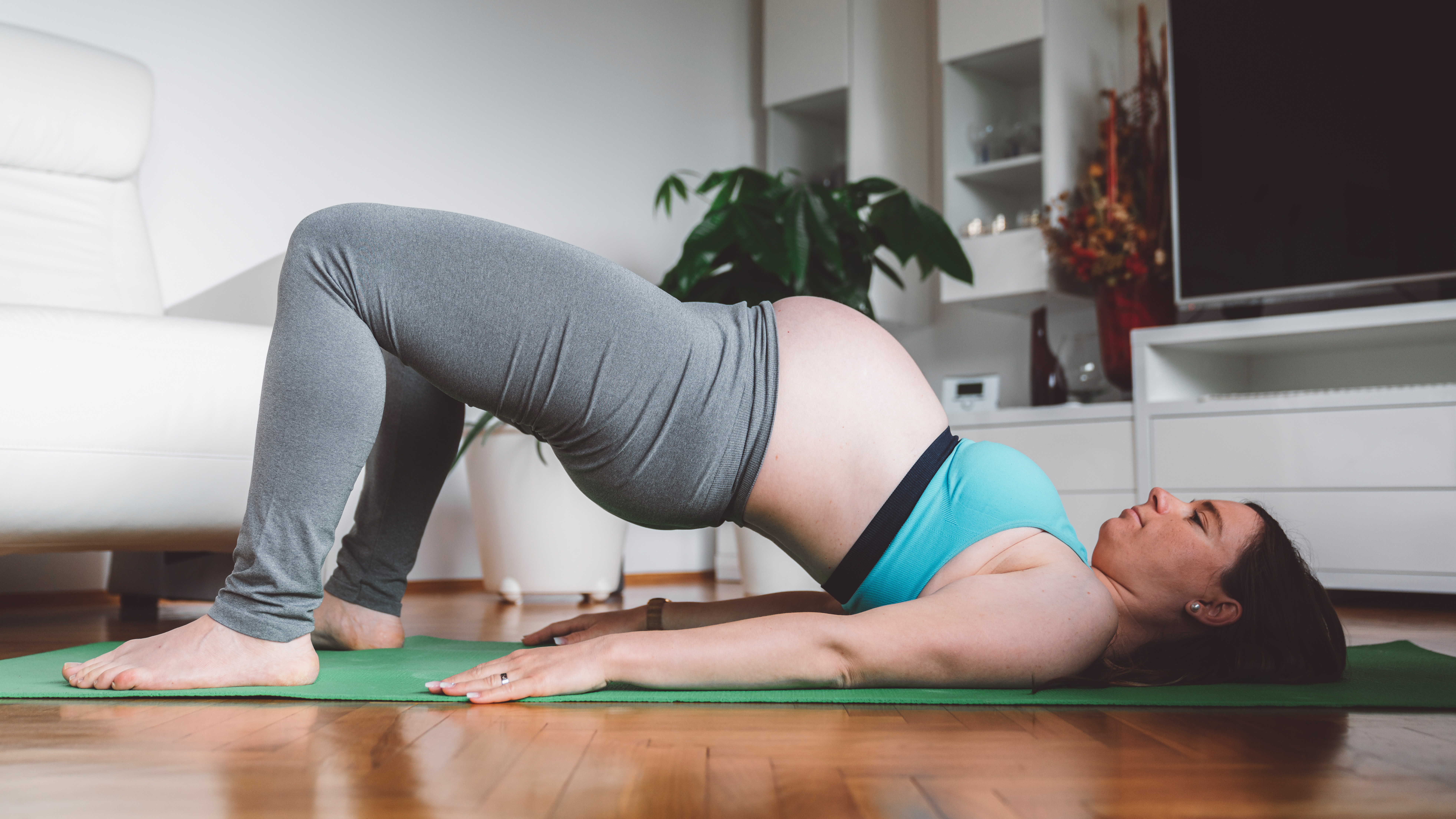Why pregnant women should train their core—and the exercises to do this safely
Strengthen your mid-body muscles with these low-impact moves


Your core muscles support your spine, help with balance and stability and allow your body to move effectively.
These muscles undergo a lot of changes when you’re pregnant because of your expanding stomach, which means certain exercises are off the table.
“When you are pregnant and your baby grows, your core muscles literally separate in the middle to allow room for your bump to grow,” says Jenny Francis-Townson, certified trainer and creator of the Mamma Rebuild program on the RWL app.
“This creates a significant weakness in your body and you lose the stability and strength from your tummy that is needed for movements [like plank] and pelvic floor strength.”
This doesn’t mean you should skip the core workouts, though. In fact, keeping your mid-body muscles strong throughout pregnancy will prevent pressure building up on your lower back, according to Francis-Townson.
Here’s a quick workout that she recommends, with pregnancy-safe moves.
How to do Francis-Townson’s pregnancy core workout
A post shared by Fit&Well (@wearefitandwell)
A photo posted by on
There are four moves:
Start your week with achievable workout ideas, health tips and wellbeing advice in your inbox.
- Glute bridge with arm extension
- Bear holds with pelvic tilt
- Reverse plank leg lifts
- Knee hover tap backs
Do each exercise for 30 seconds with a 20-second rest and three rounds. Take as much rest as you need between sets.
Good form is even more important when you’re pregnant, says Francis-Townson: “The big thing is making sure you engage your core—this usually involves exhaling and tucking your pelvis to really force your core to work.”
She recommends training the core three times a week, for 10 minutes at a time, depending on your energy levels.
“This should feel achievable and will benefit you because it will be regular enough to make a difference.”
Exercise explainers
Glute bridge with arm extensions
Sets: 3 Time: 30 seconds
- Lie on your back with knees bent and feet on the mat, and both arms extended overhead on the floor. Move your hips back into a pelvic tilt so your spine is touching the mat.
- Squeeze your glutes as you slowly raise your hips up to the ceiling.
- At the same time, raise your arms from the floor to chest level.
- Hold for one to two seconds then return to the starting position slowly.
Bear holds with pelvic tilt
Sets: 3 Time: 30 seconds
- Start on your hands and knees with your shoulders stacked over your wrists and toes tucked under. Rotate your pelvis so that you are arching your back and pushing your butt out.
- Push through your hands so that your knees leave the mat and are hovering about two to three inches off the floor.
- As you rise up, tilt your pelvis forward so that your back is straight.
- When you lower your knees back down to the mat, tilt your pelvis back so that your back is arched again.
Reverse plank leg lifts (slow)
Sets: 3 Time: 30 seconds
- Start by sitting on the floor with legs fully extended and arms behind you with fingers facing forward.
- Push up into a reverse plank position, lifting your butt off the floor, and slowly raise your right leg and lower.
- Swap sides and repeat.
Knee hover tap backs
Sets: 3 Time: 30 seconds
- Start on your hands and knees with your shoulders stacked over your wrists and toes tucked under.
- Push through your hands so that your knees leave the mat and you are hovering about two to three inches off the floor.
- Once you’ve got your balance, step the left foot back and tap it on the floor. Bring it back to the starting position and swap sides.
This is just one of many other circuits that can be found on RWL Bump & Baby’s new 21-Day Pregnancy Core fitness plan.
Why is it important to have a strong core when pregnant?
“A huge benefit of working your core during pregnancy is preparing your body for labor and delivery,” says Francis-Townson.
“Strong core muscles aid your ability to push, to move into good positions and to hold them for as long as you need to push the baby out more easily.
“Abs exercises support your core and pelvic floor in pregnancy but they really make a difference postpartum,” she adds.
“Having worked your core and pelvic floor properly in pregnancy allows your body to reconnect and return to strength in your postpartum recovery period much easier and quicker than if you don’t.”
The trainer explains that pregnancy core exercises should be low-impact and low-intensity, so everyone should feel confident doing them, but you should always consult with your medical team before starting a new exercise program and stop if you experience any pain.
Maddy Biddulph is a journalist specializing in fitness, health and wellbeing content, with 26 years in consumer media working as a writer and editor for some of the bestselling newspapers, magazines and websites in the US and UK, including Marie Claire, The Sunday Times and Women’s Health UK.
She is a CIMPSA-certified PT and works one-on-one with clients, as well as running Circuits Club classes which mixes cardio and strength training and chair-based exercise classes for seniors.
You must confirm your public display name before commenting
Please logout and then login again, you will then be prompted to enter your display name.
